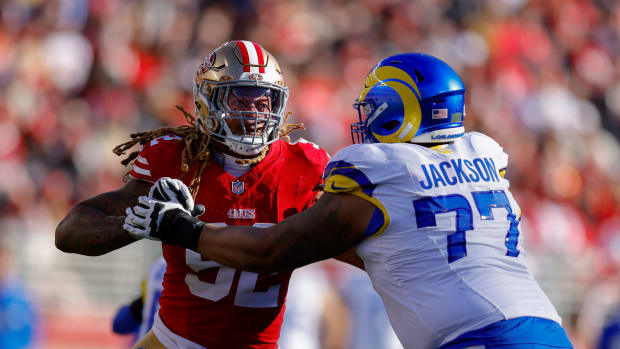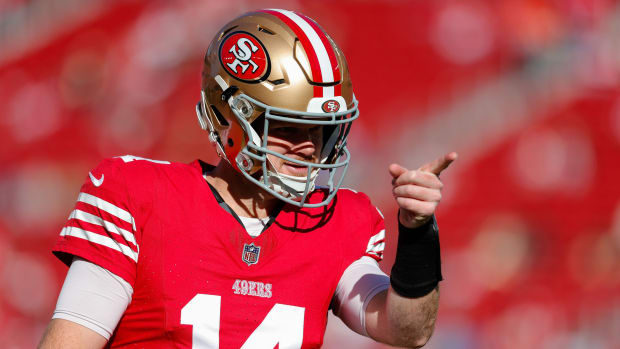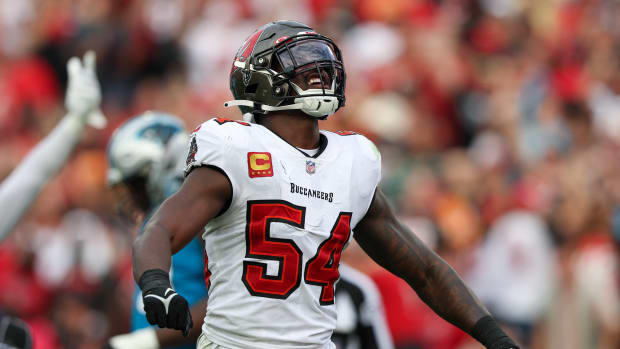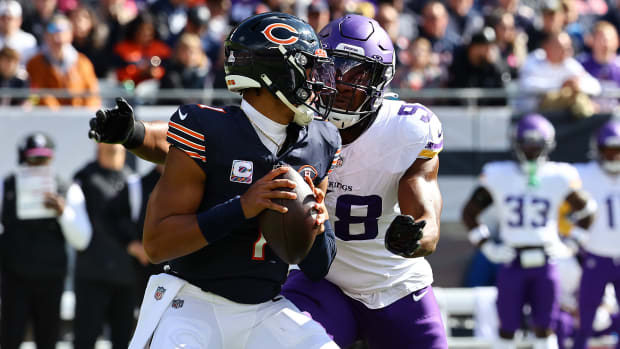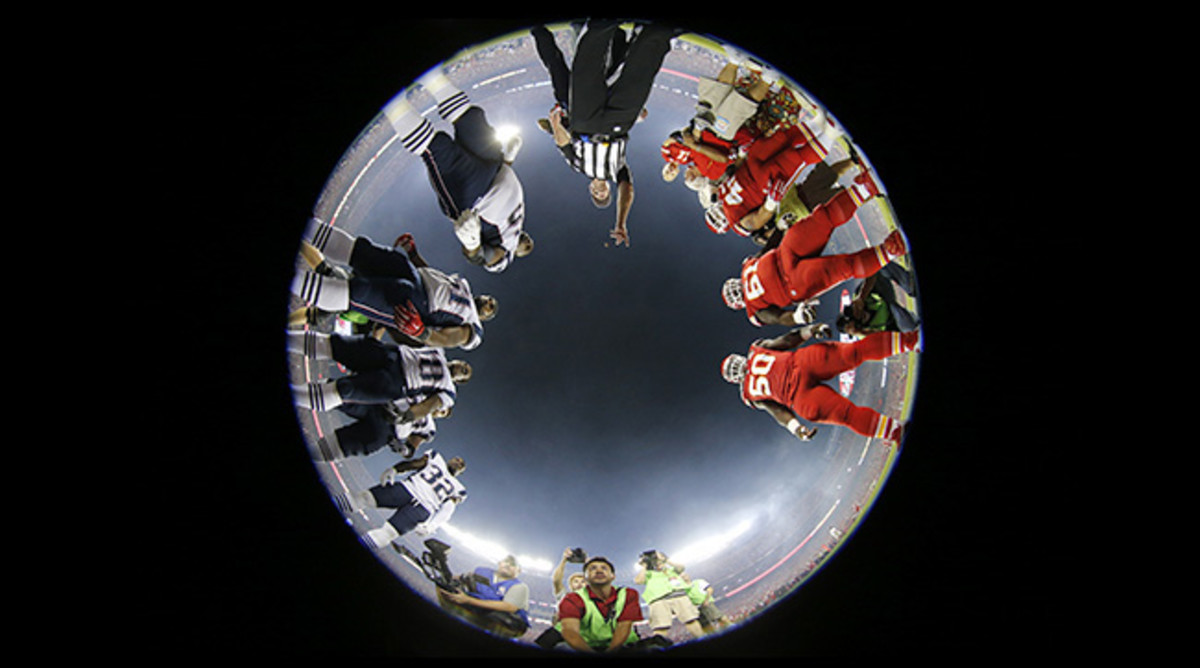
’Tis Better to Kick Than Receive?
Change can often be swift in the NFL. Star quarterbacks become backups in a blink. The Wildcat and read-option eras came and went. The days of bell-cow backs and coaches throwing out phrases like “we get off the bus running” are a not-so-distant memory. Those ever-changing winds aren’t limited to schematics, either. Strategic decisions are prone to the same sort of trends, and what’s happening at the coin toss is just the latest example.
It’s easy to forget just how new the rule allowing teams to defer their choice to kick or receive to the second half is. It wasn’t introduced until the 2008 season; that year, deferrals happened 7.8 percent of the time. Since, the number has steadily risen. A significant jump happened between 2011 and ’12, when the rate of deferrals went from 41.2 percent to 55.4, but the biggest leap ever actually took place this season. A staggering 82.5 percent of opening kickoffs were deferred, up from 65.6 a year ago. There were two weeks—including Week 17—during which not a single team that won the opening toss took the ball to start the game.
The trend makes perfect sense to Mike Pereira. As Vice President of Officiating from 2004 to ’09, one of Pereira’s initiatives, for years, was to bring the deferral rule to the NFL. As a long-standing part of the college game, deferrals had become almost automatic—around 80 percent, by Pereira’s estimation. He figured that given the choice, the tendency would become just as uniform in the NFL. The problem was, coaches didn’t want to choose.
“The resistance I ran into from the committee, who talked to the coaches, is that the coaches didn’t necessarily want to make another decision,” Pereira says. ”They felt like it added more pressure on them.
“A lot of the input we got from the coaches was that they were just going to take the ball anyway.”
Many opponents of the rule were members of the old coaching guard, long-entrenched figures who were interested in keeping the status quo. The initial pushback against deferring helps to explain why the league was slow to catch on, but the reasoning for why the shift began isn’t hard to pin down either: Like most systemic changes in the NFL, coaches started to emulate teams having success.
One of the first coaches to adopt the always-defer rule of thumb was Bill Belichick. The Patriots only won the toss four times in 2008, but on three of those occasions, Belichick chose to defer (75 percent, compared to the 7.8 percent league average). Brad Seely, the Oakland Raiders special teams coach who was in the same position with New England that season, says that while the decision whether to kick or receive can be a collective one with some teams, with the Patriots, it was always Belichick’s call.
“He had such a good handle on offense, defense, and special teams of our team, he pretty much declared what he wanted to do,” Seely says. In a piece Ben Goessling wrote for ESPN.com earlier this year, a variety of beat writers asked head coaches about what goes into their decision, and although Belichick gave a predictably staid answer about having to take every factor into effect, the truth is nearly every factor in play has led him to defer since given the option. Only twice in the past eight seasons have the Patriots won the toss and taken the ball to start the game.
The central reason most coaches have given for deferring comes down to the chance to pair a score at the end of the first half with one at the start of the second. It’s the only opportunity a team has for two straight possessions and can be a chance to instantly put the game out of reach.
“That’s what everybody wants,” Seely says. “You get a two-minute drive at the end of the half, and you get the ball at the start of the second half.”
Some coaches point to the chance to double up while others, like former Browns coach Mike Pettine, want more information on the game when his team gets the ball, an advantage of getting the second-half kickoff.
There’s also an argument that by kicking off to start the game, there’s an opportunity to gain advantage in the field position battle early by forcing a punt and shortening the field, although a crude look at the stats doesn’t bear that out. On opening drives resulting in a punt this season, the average start was the 22-yard line, and drives gained around 11 yards on average. A standard punt (about 40.4 net yards) puts the opposition on the 26-yard line for their opening possession. The difference there isn’t significant.
Whatever the reason, the biggest motivation behind more teams deferring seems to come from the wins column. From 2011 to ’12, when there was a jump of more than 14 percent, deferring teams had won 60.7 percent of the time the previous season. From last season to this one, when the jump in deferrals was nearly 17 percent, it came after deferring teams won 55 percent of their games.
The question, then, is whether there is causation in the correlation: Do teams win because they defer, or do the teams that happen to win a lot happen to be the ones that defer? In 2011, the win numbers were aided by a 13-3 49ers time that liked to defer and won 11 of 16 coin tosses. The Patriots and Packers did their part by going 12-2 in games in which they deferred. Last season, New England won 12 of 16 tosses and went 10-2.
Any coach arguing that deferring helps win games enjoys seeing numbers like that. But drilling further, the math argument gets weaker. On game-opening drives this season, teams scored 31.8 percent of the time, with touchdowns coming on 20.5 percent of drives. To start the second half, the number only jumps to 33 percent. And those figures have held steady over the past five seasons. The likelihood of scoring to start the first and second half has been almost equal. New England, for example, has scored points on 45 percent of their opening drives in both halves since 2011. And from a win-loss perspective, Belichick, Brady and Co. won 66 games in the five seasons before the decision to defer was added to the mix in ’08. In the five subsequent seasons, they won 60.
In the past three seasons, Bruce Arians’ Cardinals have won the coin toss 24 times. He’s taken the ball on 23 of those occasions. Arizona and Pittsburgh were the two teams this season that bucked the deferral trend, choosing to receive each time they won the toss. They also finished second and fourth, respectively, in points per game. “I’m an offensive coach,” Arians told ESPN.com’s Josh Weinfuss earlier this season. “A defensive coach is going to put his defense out there or defer. We want the ball. We want the ball to start every game. We take pride in scoring points with our first possession.”
This year, Arizona did its best to swing the numbers back in favor of those who receive. For the first time since the rule was adopted, teams that deferred the kickoff won—48.3 percent of the time—less often than they lost, and the Cardinals’ 9-2 record when winning the toss certainly helped sway it that direction. The decrease in win percentage for deferring teams lends more support to the idea that the choice made at the coin toss doesn’t lead to wins and losses. But looking at the drastic change that’s happened in the past year, the league’s stance has fully come into focus.
“Again, it goes back to that second half,” Seely says. “You want the ball coming out in the second half because you just feel like you can go down, score, and set the tempo for the whole rest of the game.”
It took a few years, but eventually, the wave of trends in the NFL finally reached the coin toss too. The deferral era is here, and it’s likely here to stay.

































